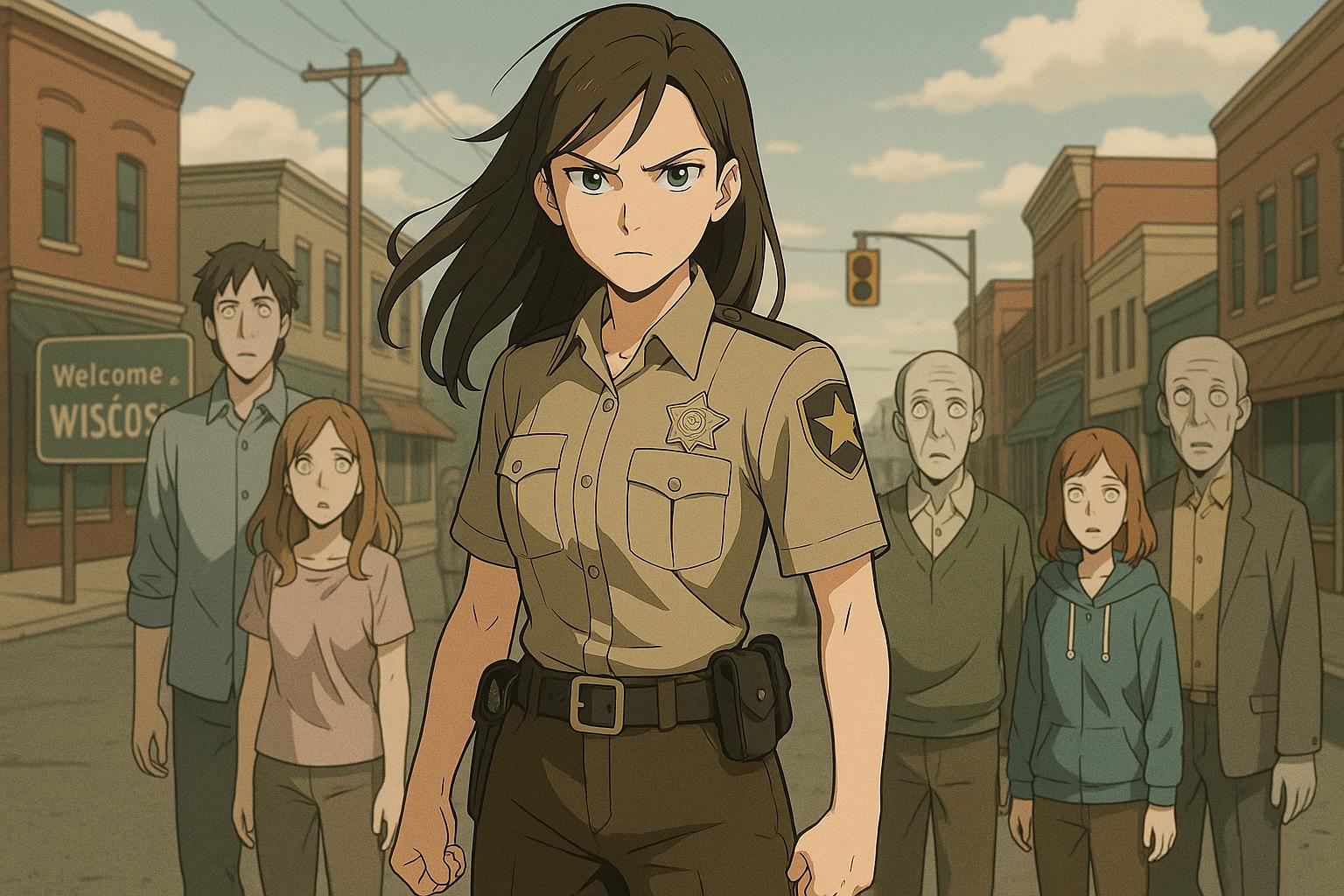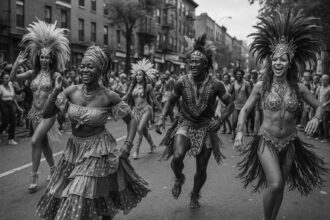Tim Seeley and Mike Norton’s acclaimed comic Revival, known for reimagining zombies as returning citizens rather than monsters, is set for a SyFy TV adaptation in June 2025, bringing its nuanced exploration of grief, community, and ethical dilemmas to the screen.
The medium of comic books offers a distinctive platform to explore reimagined narratives within the horror genre. Notably, Tim Seeley and Mike Norton’s Revival, published by Image Comics from 2012 to 2017, challenges traditional zombie tropes. Rather than focusing on the stereotypical flesh-hungry undead, Revival presents a scenario in which the deceased return not to feast, but to reclaim their past lives. This premise raises intriguing questions: What happens when the dead come back and attempt to reintegrate into society? How does a community cope with their reappearance?
Set in a fictional Wisconsin town, the narrative follows Deputy Sheriff Dana Cypress and her sister Em as they confront the complexities of life, death, and familial relationships amid chaos. The return of the recently deceased coincides with a government quarantine, an experience that resonates with current societal themes. “The story flips the survival narrative on its head,” Seeley explains, “and instead addresses the aftermath of loss—the grief and the ongoing lives left behind.”
With its genesis in the post-Walking Dead landscape, Revival resembles a fresh take on the zombie phenomenon. Revived characters grapple not only with the implications of their return but also with a series of interconnected mysteries. These include the investigation of a murder involving one of the returned, adding layers of suspense and moral dilemmas. The character-driven conflict between Dana and Em serves as a central pillar of the story, crafted to reflect the emotional complexity of family ties strained by trauma.
The setting of Wausau—where Seeley grew up—serves as a vibrant backdrop, depicted with both charm and grit. As Seeley described, Wisconsin’s politically diverse environment enhances the narrative’s exploration of societal dynamics. The rural setting plays a critical role in establishing the tone, with Revival weaving together elements of small-town life, religious zealotry, and local law enforcement challenges encountered by Dana.
In addition to engaging character arcs, Seeley’s commentary on crime dynamics in Revival sheds light on darker undercurrents in society. The return of the dead inadvertently creates new criminal opportunities, a metaphor for the exploitation inherent in various social systems. “The desire for Revivers’ body parts for medical and cosmetic use illustrates a deeper commentary on commodification and moral compromise,” Seeley notes. This aspect of the narrative resonates with contemporary concerns about ethics in a capitalist society, positioning the comic as an allegorical reflection of real-world issues.
As the emotional and narrative depth unfolds across 47 issues, the aesthetics provided by Mike Norton play a pivotal role. Described as a master of connecting audiences with everyday characters, Norton’s clean art style sharply contrasts with the series’ graphic moments of horror. The juxtaposition enhances the shock value, ensuring that narrative tension remains high.
In recent years, the relevance of Revival has gained renewed significance, especially following the tribulations many faced during the 2020 pandemic. The themes of isolation and societal conflict mirror contemporary struggles, reminding readers of the haunting impact of grief and community fractures. “Our experiences during lockdown gave fresh insights into the feelings of being trapped and the cultural rifts that people can exploit,” Seeley reflects, capturing a moment in time that resonated deeply with audiences.
The arrival of Revival in an upcoming television adaptation on SyFy marks a significant milestone for Seeley. Unlike previous adaptations that failed to capture the essence of the comic, this version comes from a creative team deeply respectful of the source material. Co-showrunners Luke Boyce and Aaron B. Koontz, who have been intimately involved with the project, bring an understanding of the narrative’s tone, blending horror with dark humour without overshadowing its emotional core.
The show promises to explore not only the horror elements intrinsic to its premise but the rich character dynamics that made the comic compelling. “It’s the right balance—without leaning too heavily into gore or levity,” Seeley assures. The enthusiasm around the adaptation stems partly from the success of the genre in recent years, paving the way for nuanced storytelling in horror settings.
Fans await the premiere on June 12, 2025, with bi-weekly episodes. This renewed version of Revival may serve not only as a captivating narrative but also as a reflection on personal and societal struggles that echo through time, making the story as relevant today as it was during its initial run.
 Reference Map:
Reference Map:
- Paragraph 1 – [1], [2]
- Paragraph 2 – [1], [3]
- Paragraph 3 – [1], [5]
- Paragraph 4 – [2], [3]
- Paragraph 5 – [1], [4]
- Paragraph 6 – [7]
- Paragraph 7 – [1], [5]
- Paragraph 8 – [1], [5]
Source: Noah Wire Services
- https://www.fangoria.com/ultimate-guide-revival-zombie-series-comic/ – Please view link – unable to able to access data
- https://imagecomics.com/news/life-after-death-in-revival – This article introduces ‘Revival’, a new Image Comics series by Tim Seeley and Mike Norton, set to debut in July 2012. The story is set in a rural Wisconsin community where the dead return to life, resuming their previous lives. The narrative follows Officer Dana Cypress as she navigates media scrutiny, religious zealots, and government quarantine. The series is described as a ‘farm noir’ that offers a fresh twist on the zombie genre, blending horror with a small-town mystery.
- https://en.wikipedia.org/wiki/Revival_%28comics%29 – This Wikipedia page provides an overview of ‘Revival’, an American horror comic series created by writer Tim Seeley and artist Mike Norton. Published by Image Comics, the series ran for 47 issues from July 2012 to February 2017. Set in central Wisconsin, the story revolves around the sudden resurrection of the dead, focusing on detective Dana Cypress and her revived sister, Em. The series delves into themes of religion, morality, and social dynamics, with the creators drawing inspiration from their small-town backgrounds.
- https://www.simonandschuster.com/books/Revival-Compendium/Tim-Seeley/9781534389168 – This page details the ‘Revival Compendium’, a comprehensive collection of the ‘Revival’ comic series by Tim Seeley and Mike Norton. The compendium includes all 47 issues, the Free Comic Book Day short story, a crossover with ‘Chew’, a cover gallery by Jenny Frison, and various behind-the-scenes features. The narrative is set in rural central Wisconsin, where the dead return to life, and follows Officer Dana Cypress as she confronts media scrutiny, religious zealots, and government quarantine.
- https://en.wikipedia.org/wiki/Revival_%28TV_series%29 – This Wikipedia page discusses the upcoming supernatural horror noir television series ‘Revival’, based on the comic series by Tim Seeley and Mike Norton. Created by Aaron B. Koontz and Luke Boyce for Syfy, the series is set to premiere on June 12, 2025. The plot centers on a rural Wisconsin town where the recently deceased return to life, maintaining their previous appearances and memories. The local police officer, Dana Cypress, investigates a murder mystery involving both the living and the undead.
- https://www.simonandschuster.com/books/Revival-Volume-1/Tim-Seeley/9781607066590 – This page provides information about ‘Revival Volume 1: You’re Among Friends’, the first collected edition of the ‘Revival’ comic series by Tim Seeley and Mike Norton. The volume includes issues #1-5 and the ‘Free Comic Book Day’ short story. The story is set in rural central Wisconsin, where the dead return to life, and follows Officer Dana Cypress as she deals with media scrutiny, religious zealots, and government quarantine. The series is described as a ‘farm noir’ that offers a new twist on the zombie genre.
- https://bloody-disgusting.com/news/3207922/review-revival-volume-1-youre-among-friends/ – This review from Bloody Disgusting discusses ‘Revival Volume 1: You’re Among Friends’, highlighting the comic’s chilling opening and masterful pacing. The narrative, set in a small Wisconsin town, revolves around the sudden return of the dead and the living’s struggle to cope with them. The review praises the series for its compelling storytelling and the eerie atmosphere created by the collaboration between writer Tim Seeley and artist Mike Norton.
Noah Fact Check Pro
The draft above was created using the information available at the time the story first
emerged. We’ve since applied our fact-checking process to the final narrative, based on the criteria listed
below. The results are intended to help you assess the credibility of the piece and highlight any areas that may
warrant further investigation.
Freshness check
Score:
10
Notes:
The narrative is highly fresh, published on June 10, 2025, just one day before the current date. It provides an in-depth look at the upcoming Syfy series ‘Revival,’ set to premiere on June 12, 2025. The article includes recent interviews with creator Tim Seeley, offering new insights into the comic series and its adaptation. No evidence of recycled content or prior publication was found. The inclusion of a press release about the TV adaptation further supports the high freshness score.
Quotes check
Score:
10
Notes:
The article features direct quotes from Tim Seeley, such as his explanation of the narrative’s focus on the aftermath of loss and the exploration of grief. These quotes appear to be original, with no prior matches found online. The wording is consistent with Seeley’s known style, and no discrepancies were noted.
Source reliability
Score:
9
Notes:
The narrative originates from Fangoria, a reputable publication known for its coverage of horror and genre entertainment. The article is well-researched, citing multiple sources, including interviews and press releases. However, as with any publication, it’s advisable to cross-reference critical information with other reputable outlets.
Plausability check
Score:
10
Notes:
The claims made in the narrative are plausible and align with known facts about the ‘Revival’ comic series and its upcoming television adaptation. The article accurately describes the setting, characters, and themes of the series, and the release date of June 12, 2025, is consistent with official announcements. No inconsistencies or implausible elements were identified.
Overall assessment
Verdict (FAIL, OPEN, PASS): PASS
Confidence (LOW, MEDIUM, HIGH): HIGH
Summary:
The narrative is a fresh and original piece, providing new insights into the ‘Revival’ series and its upcoming adaptation. The quotes are original, and the source is reputable. All claims are plausible and supported by current information.













